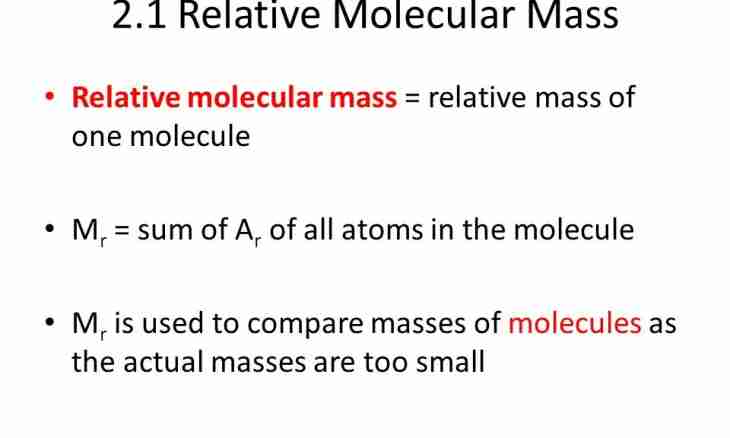For certain from school you know such concept as molecular mass of substance. Actually, it is just the mass of a molecule, she just says in relative units - atomic units of mass (and. e. m), or daltona that same. Such unit of measure is entered for convenience because the real mass of molecules in kilograms (SI) is very small and inconvenient for calculations.
It is required to you
- For calculations take the handle, the calculator and Mendeleyev's table.
Instruction
1. Unit of molecular weight are 1/12 mass of atom of carbon which is conditionally taken for 12. Molecular weight is in number equal to the total relative atomic mass of all atoms entering a molecule and it is very easy to calculate it.
2. According to Avogadro's law the identical volumes of gases with a constant pressure and temperature will contain identical number of molecules. Mendeleyev-Clapeyron's equation was brought out of it later. Now you will need to them to use, but it is fair only for gaseous substances! Substitute pressure known to you and temperature in a formula, as a result receive the molecular mass of gas: M=(m∙R∙T)/(P∙V), where M – required molecular weight, m – the mass of substance, R – a universal gas constant (to take for 8.31 J / mol*k), T – temperature in Kelvins, P – pressure in Pascals, V – volume in cubic meters. Apparently, this way requires many data, but the error of such calculations is minimum.
3. The following method is much simpler. If only the mass of substance m and its chemical quantity ν is known to you, then substitute these data in a formula: M=m/ν where m is the mass of substance (as a rule, in grams), and ν – amount of substance in moths.
4. And there is the simplest option if the chemical formula of substance is known to you. Take Mendeleyev's table, look at the molecular mass of each element which is a part. For example, at hydrogen it is equal 1, at oxygen – 16. And to find the molecular mass of all substance (we will take water which consists of two molecules of hydrogen and one molecule of oxygen for an example) just put the mass of all elements entering it. For water: M (H2O) = 2M(H)+M(O) = 2•1+16 = 18 and. e. m.

